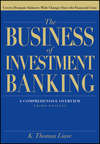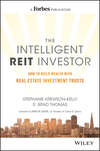Kitabı oku: «Time Management and Self-Organisation in Academia», sayfa 4
☺‘I like to do it’
☹‘I don’t like to do it‘
♥‘This is close to my heart‘
✓‘It’s part of the job without any positive or negative emotions’
→‘I would prefer to delegate this’
If you wish, you can also write down an approximate estimate of how much time you spend on each task. This analysis of the current situation often gives you ideas for possible improvements that will bring you a little closer to your ideal life (the target). In any case, the overview helps to achieve realism and a more conscious life balance and facilitates decisions on priorities.
Example of a role mind map:

Since academic work itself is usually associated with different roles, which also place different demands on your planning and time management, the following table can be helpful for this and also for the rest of your work (especially with the help of Chapter VI on core academic tasks).22
Assign your most important tasks to one of the main roles. Add a sentence expressing how important each of these roles is to you. In the two columns on the right, add your self-assessment of how well you fulfil each of these roles and how long you work on them on average or as a per centage of your total professional time budget. This analysis of the current situation also allows you to identify bottlenecks and draw initial consequences.
My roles as a lecturer in higher education:

Integration of all areas of life:
In order to achieve a long-term, healthy life plan that corresponds to your overriding goals, we recommend that you fundamentally distinguish between four areas of life indispensable for every person in some way.23 The traditional division into ‘work’ versus ‘private’ or ‘leisure’ is too undifferentiated.
Occupation/Profession: Possible roles include researcher, teacher, project supervisor, crisis manager, etc.
Family and supporting relationships: Possible roles include daughter/son, mother/father, sister/brother, spouse/partner, friend, etc.
Meaning/commitment: Concern for the meaning of your life has a theoretical and spiritual side as well as a practical one: what you are committed to outside of work and sustaining relationships, where you volunteer because this is how you fulfil your values. Possible roles include neighbourhood helper, practising a religion, meditation, involvement in human rights or animal protection, etc.
Self-care: What you do not do for others, but directly for yourself, your health, recreation, balance. Possible roles include runner, band member, yogi, reader, lazy person, gourmet, etc.
Using this four-fold classification, you should first reflect on your life and ask yourself what vision and what goals you have as an academic, as a family member or in a similar close relationship, as a person seeking meaning, or simply for yourself.
| Area of life | Life goal | Specific terms (vision) |
| Profession | ||
| Family/supporting relationships | ||
| Meaning/commitment | ||
| Self-care/health |
Master plan:
At the level of annual or semester planning, you can make good use of the four-part division of the areas of life in the form of a so-called master plan. Planning works on specific goal formulations, but this must go hand in hand with the necessary flexibility and a playful attitude that can seize unexpected opportunities. Without this combination of determination, on the one hand, and openness and love of life, on the other, a danger emerges of either creating the illusion that everything can be controlled, or not even considering important areas of life for fear of over-planning and losing spontaneity. Some private opportunities would then only randomly come under consideration. Since professional goals are (and have to be) planned anyway, this usually means that private goals are given too little chance of being achieved.
Another one-sidedness to be avoided is only planning activities that can easily be formulated in terms of project goals, because these have obvious substeps and a plannable end date. The challenge of planning and operationalising personal development, such as learning new skills or acquiring new habits, lies in the difficulty of defining the intermediate goals and end states of these efforts. For example, when would you have reached the goal of learning a new language or a musical instrument? You must develop a criterion yourself that makes such a goal measurable, and regularly schedule time for step-by-step learning and practising along the way. Or, when would you have developed the new habit of starting your work at eight o’clock every day? Actually, when you no longer have to think about it because you do it ‘automatically’—but until then you have to take enough time to consolidate the new behaviour and regularly ask yourself how far you have come towards this goal.
Plan not only project goals, but also learning and habit goals. If you intersect these three categories of goals with the four most important areas of life, you have the basic pattern of a comprehensive master plan that allows for balanced time management and self-organisation.
Link this to your annual or semester planning (see Subchapter IV.5 under ‘Medium-term planning’) by creating such a matrix yourself in your computer and then filling it in and updating it regularly.
The following sample master plan presents the basic structure and uses creative examples to show the possibility of formulating any kind of goals for any area of life. It is not always necessary to enter an intention in all table fields, but over the course of several plans, you will make sure that no area of life is neglected in the long run. The current weighting of the individual areas will be based on objective constraints, especially professional duties, but also on your personal values. Regular planning and evaluation with this instrument allow you to postpone projects to the next year, for example, without forgetting them.
Your master plan should, in terms of the first dimension of life planning discussed at the beginning of this chapter, include agendas of career or professional planning.
•What projects should I carry out in the next year/semester to develop longer-term career options?
•What do I want to learn in this respect, what additional competences do I want to acquire?
•What habits—especially of time management and my self-organisation— will support me in this? What new behaviour will I adopt first?
•Which areas of my life have been neglected so far, and what concrete, verifiable goals do I now set for myself in these?
Master plan from___ to___ (Next planning day: _____________)

Personal Challenges and My Commitments
The most important ideas to improve my self-organisation:
My commitments and SMART goals:
1We assume that human intelligence is composed of diverse abilities of comprehension, retention, evaluation, and processing, related to different thought processes such as semantic, symbolic, pictorial. Here, too, there is an individual profile, and within limits it can be changed by training. However, individual intelligence has more to do with the ‘what’ of the choice of studies and professions (a mathematically gifted person is more likely to choose physics, a linguistically gifted person is more likely to choose literary studies), while our topic concerns the ‘how’, where behavioural predispositions are much more important.
2This is about personal preferences, not about the usefulness of or requirement for multiple-choice tests in particular subjects and courses.
3John G. Geier/Dorothy E. Downey: Development and Psychometric Properties of the Behavior Indicator, Minneapolis (Aristos) 1995; John Erpenbeck (ed.): Handbuch Kompetenzmessung, Stuttgart (Schaeffer-Poeschel), 2003, 505–518.
4This can also be done online. Information can be found at http://www.persolog.de/shop/eport-online-profile/ (23.3.2021). For those who read German, the colourful book 1x1 der Persönlichkeit (1x1 of Personality) by Seiwert/Gay offers an initial self-assessment and practical applications for increasing effectiveness in the areas of time management, employee leadership, teamwork, sales, partnership and child rearing, as well as adaptation strategies.
5Adapted from: Seiwert/Gay: Das 1x1 der Persönlichkeit, 39–50.
6Translated from an interview with a woman academic by Lichtenberger-Fenz/Ingrisch, in: Beruf, Karriere und Wissenschaft, 90.
7Ibid. 25.
8Monika Klinkhammer: Supervision und Coaching für Wissenschaftlerinnen: theoretische, empirische und handlungsspezifische Aspekte, Wiesbaden 2004, 68.
9See the role analysis proposed in Subchapter II.3.
10A basic definition sufficient for our purposes, which emphasises the need for coordination with others, is: ‘Values are cognitive representations of central human goals and motives about which persons must reach agreement in order to realise them’. (German original: „Werte sind kognitive Repräsentationen zentraler menschlicher Ziele und Motive, über die sich Personen im Hinblick auf ihre Verwirklichung verständigen müssen.“) Wolfgang Bilsky: Werte und Werthaltungen; in: Hannelore Weber (ed.): Handbuch der Persönlichkeitspsychologie und differentiellen Psychologie, Göttingen (Hogrefe) 2005, 298–304; quote 301.
11Personal experiences gathered in our seminars and coaching sessions reveal this.
12See the value squares relating to communication in: Friedemann Schulz von Thun: Miteinander reden 2. Stile, Werte und Persönlichkeitsentwicklung, Hamburg (rororo) 2019, 38−47.
13See Markus Riedenauer: Zum philosophischen Wert des Wertbegriffs oder: Die Renaissance der Werte und die Frage nach der geeignetsten Geburtsklinik; in: Martina Fürst/Wolfgang Gombocz/Christian Hiebaum (eds.): Analysen, Argumente, Ansätze Band 2, Heusenstamm (Ontos) 2008, 447−455.
14‘It is the mark of an educated mind to be content with that degree of accuracy admitted by the nature of things.’ (Aristotle: Nicomachean Ethics 1094b 24 f.)
15A 2008 study by the HIS Institute for Higher Education Research in Hanover, ‘Berufsverbleib von Geisteswissenschaftlerinnen und Geisteswissenschaftlern’ found that most humanities students do not find a regular job after graduation. One year later, just under half of the graduates have managed to do so (in contrast 73−85 per cent of graduates in economics have success). Although unemployment among humanities graduates is low in the long term, the long period of search-related unemployment causes significant psychological problems. The reasons lie in the less structured labour market, but also in the lack of contacts through internships, etc. ‘Humanities graduates often do not consider which career path is right for them until after graduation’ (Kolja Briedis, Die Zeit/20.1.2011).
16Seneca: Epistulae morales VIII, 71.
17The website www.xpand.eu offers help and seminar offers specifically for these life issues. Career centres at universities can give good advice on professional matters.
18See Buller: The Essential College Professor, Part I; Müller: Promotion – Postdoc – Professur; Kaiser: Reiseführer für die Unikarriere. More specifically for the transition from the doctoral phase to the ‘early career’ with differentiation between academic contexts in the USA, Australia, UK, and Canada McAlpine, Lynn/Åkerlind, Gerlese: Becoming an Academic, Basingstoke (Palgrave Macmillan) 2010.
19„Die kleinen Erfolge und großen Versprechen tragen dazu bei, dass hochqualifizierte Akademiker zu geduldigen Prekariern werden.“ (Klaus Dörre/Matthias Neis: Geduldige Prekarier? Zur Unsicherheit wissenschaftlicher Karrieren; in: Forschung und Lehre, Okt. 2008, 674).
20Lichtenberger-Fenz/Ingrisch: Beruf, Karriere und Wissenschaft, 72.
21Inken Lind: Aufgeschobene Kinderwünsche, eingeschränkte Perspektiven. Zur Vereinbarkeit von Wissenschaft und Elternschaft – Ergebnisse einer aktuellen Studie, in: Forschung und Lehre, 11/2008, 754 ff.
22See Buller: The Essential College Professor, Chapters 2−4: The College Professor as Teacher/as Scholar/as Citizen.
23Based on the model of life balance by Lothar Seiwert: Life-Leadership. Sinnvolles Selbstmanagement für ein Leben in Balance, Frankfurt (Campus) 2001, 24. A similar model of four areas is developed by Nossrat Peseschkian/Nawid Peseschkian: Erschöpfung und Überbelastung positiv bewältigen, Stuttgart (Trias) 2003.
III.Managing Personal Energy—From Distress to Flow
What it’s about:
To everything there is a season, and a time to every purpose under the heaven.
Ecclesiastes 3:1
The popular comparisons of the human brain to a computer and of memory to a hard disk show that we gradually become accustomed to thinking of ourselves as machines. However, everyday experience reveals that we consist of much more than mechanical systems: Our complex existence results from a unity of physical organs, soul, and spirit. We can only perform well if we are in good condition as whole human beings. Then we feel full of energy and can master the cognitive, emotional, or physical challenges that encourage human growth. With the help of this chapter, you will understand better how the three-dimensional human constitution interacts with the environment. You will be introduced to many approaches to improve your energy balance, resilience to stress, mental performance, and motivation.
1.Distress and eustress
What it’s about:
A successful life is based on carefully and purposefully managing your energy and actively dealing with stress. In our fast-paced and unpredictable world, mental illness continues to spread widely. The World Health Organization has declared occupational stress to be ‘one of the greatest dangers of the 21st century’.1 According to our experience, the most common causes of professional stress for academics include insecure employment contracts, permanent pressure to perform, too many tasks, and organisations that do not adequately appreciate individuals. This chapter shares suggestions on how to identify your personal stressors, what you can do for a healthy personal energy balance, and what measures you can take preventively as well as in an acute situation of excessive demands.
What is stress?
Stress is understood to be the strain caused by external burdens, i.e. objective factors acting on a person from the outside. These can be of a physical nature (cold, heat, noise, strong sunlight, etc.) or toxic substances (e.g. smoke). On an emotional level, psychological burdens and certain personal attitudes, expectations, and fears can be stressors.
Originally, the term comes from physics. In materials science, stress means tension or pressure. In 1936, the physician Hans Selye described the body’s general reaction to any demand as stress. It usually involves the feeling of an imbalance between the demands made and the resources available to cope with them.
In everyday language, stress has negative connotations, but it is not at all harmful in principle; it is unavoidable as long as life has to contend with its environment. Every disruptive factor that disturbs homeostasis is called a stressor.2 Two forms of stress can be identified, depending on whether a stressful situation is assessed as negative or positive:
Distress occurs when an event seems unpleasant, threatening, or overwhelming.
Eustress happens when an event feels pleasant or pleasurable while representing a challenge.
The transition from eustress to distress can often be fluid. Especially scholars who identify strongly with their work and find it fun and fulfilling, often forget to schedule well-timed rest and leisure. Burnout research has shown that people who are ‘on fire’ for their job can burn out. Here, too, the question of the right balance arises repeatedly, and one needs to regularly listen to oneself and to recognize physical and mental signals before problems develop.
As soon as a situation appears to be stressful, the body activates an emergency programme: Alerted by the hypothalamus, the pituitary gland releases messenger substances. They reach the adrenal cortices via the bloodstream. The adrenal cortices produce the stress hormone cortisol. Also, the adrenal medulla produces adrenaline and noradrenaline. This puts the entire body on alert. Humans benefit from the energy of the stress response in situations requiring strength and effort to respond with fight, flight, or competition. However, in the everyday working life of the 21st century, this biological survival program, which allows people to react to extraordinary challenges, is often counterproductive.3 Running away from the situation is not possible or is considered a somewhat unprofessional course of action. At the same time, the stress response limits the ability to think and make decisions, which also restricts the perceived autonomy of action.
In healthy people, once the blood reaches a certain concentration of stress hormones, the hormones prevent further release. The body relaxes again. If this regulatory cycle is disturbed, the stress hormone level in the blood remains permanently high and the body cannot return to its previous level of functions. The persistently high release of stress hormones weakens the immune system and can lead to exhaustion along with physical and mental illness. Without time for the body to recuperate, stress becomes dangerous.
But with the right rhythm, in other words, a well-balanced interplay between tension and release, you can grow with increased demands and duties and even develop more self-confidence.
Factors creating stress
How you experience and process stress frequently depends on your subjective perception and assessment. The decisive moment results from interpreting the meaning of a situation. Usually, your experiences and expectations, regardless of whether they are real or unreal, shape how you make sense of circumstances. Stress is therefore partly ‘self-made’; a given situation may or may not cause stress.
The perception of a ‘dangerous’ situation depends, of course, largely on an individual’s current circumstance. A person with a permanent job will assess the danger of unemployment differently than someone only working on a temporary project.
A second factor is the ability to control. If you believe that you can easily control a threatening event, you will experience much less stress. ‘Stress is the feeling of being overwhelmed or unable to cope with mental or emotional pressure.’4
In addition, the available personal resources also determine the impact of stress. External resources include a person’s coping opportunities offered by the environment, such as room to manoeuvre and participate, social support, an interesting job, opportunities for promotion, and a good organisational culture. Inner resources involve individual coping abilities such as physical fitness and healthy habits, social integration, self-esteem, problem-solving skills, and the ability to relax. People who must cope with high demands but can hardly influence what happens in the organisation face the greatest health risks.
Your basic attitude towards yourself and others5 also plays a role in dealing with stress. If you perceive yourself and your environment as positive, then you can deal with problems more constructively, find solutions more easily, and cope better with stressful situations (also in a team). However, if you view yourself and/or your environment negatively, this usually leads to an increasing focus on problems and a decreasing ability to find solutions. This negative attitude results in taking defensive positions, seeking mistakes and people to blame—pressure and inflexibility will increase. Objectivity succumbs to emotionality, aggression, or even withdrawal, resignation, and helplessness. Not observing basic fairness can increase perceptions of stress. People want an appropriate reward for their performance in the form of salary, career prospects, and recognition. Without respect for these unspoken expectations of mutually beneficial relationships, then noticeable stress develops.
Stress types
Stress researcher Bruce McEwen distinguishes between three different types of people susceptible to the long-term stress that can lead to health problems.6
The first type depicts a person who needs a different stressor every day; for example, someone who constantly takes on new projects, makes deadlines and, moreover, always tries to please his superiors.
The second type describes those who cannot get used to a recurring stressor. In contrast, a person normally reacts strongly to a stressor at the first encounter, but as soon as the person knows the danger, the stress reaction weakens over time. Thus, a healthy person learns to cope with the stressful situation to a certain extent.
The third type denotes the person who has difficulty switching off. The stressor has long since disappeared, yet the person’s stress reaction does not subside.
•If you analyse the stress factors, basic attitudes, and stress types for yourself—where do you recognise yourself and your own behaviour?
•How would you classify people with whom you work or live in order to better evaluate their reactions in the future?
Stress has a ‘contagious’ effect. If you understand yourself and others better, you can more quickly escape from the cycle of mutually escalating emotions.
Potential stress triggers
Work: Too much work, work under pressure, constant interruptions.
Rhythm and recreation: Working against one’s own rhythm, too few breaks and times for retreat, recreation and creativity, constant availability (smartphones, etc.).
Organisational and information culture: Lack of appreciation and social support from superiors, (too) strong competitive thinking and little team spirit, few opportunities to contribute input and make decisions, little or contradictory information, few or no development opportunities.
Globalisation and speed: High speed of (working) life, expertise must be constantly updated (decreasing half-life of knowledge), constant confrontation and strong competition within the ‘academic community’, feeling ‘it is never enough’.
Personal: Too many different life and professional roles or demands, personal goals constantly falling by the wayside, inner drivers such as perfectionism, high personal expectations regarding speed or motivation, contractual/financial uncertainties, professional and/or private conflicts.
•What are my main stressors? Can I list them in order of importance? Am I under pressure in a specific area or is it the accumulation of several factors?
•What is my own inner expectation behind it?
•What physical symptoms do I show?
•What early warning signals do I recognise in/before stressful situations?
Defence mechanisms and stress management7
If one does not have adequate strategies for dealing with stress, one often unconsciously adopts defence mechanisms that provide relief at the moment, but rarely contribute to a solution. These include, for example, repressing distressing situations, rationalisation (looking for a plausible explanation for a disappointing situation, which, however, does not correspond to the real facts), reverting to past developmental stages by reacting like a child, withdrawal, projecting one’s own behaviour onto others or also being too preoccupied with one’s own person. You should avoid all of these.
Analyse stressful situations, reflect on your own behaviour, and look for solutions. However, don’t constantly brood over stressful things and don’t belittle yourself.
The approaches proposed here relate to the three levels of evaluating thoughts, physical processes, and behaviour.8 Each approach to change has an impact on the other two levels because of the anthropological unity, so you can start in an area of your choice and preference.

Think about a typical stressful situation and consider what you can personally do about it.
Which of your own expectations, demands and inner drivers, such as perfectionism or the desire to please others, repeatedly drive you into seemingly hopeless situations?
What can you change yourself, and what do you have to live with right now because of the hierarchical conditions and dependencies? This can be the case, for example, if you are assigned administrative tasks and the administrative director also sits on your habilitation committee.
Develop a feeling for the tactics of those around you and consider appropriate strategies to counter them successfully. Don’t put up with everything!
Stress reduction through supportive thoughts, judgements, and attitudes
Your thoughts, attitudes, judgements, and perceptions play a decisive role in whether you experience a situation as stressful (and at what level). If you judge your environment as supportive or neutral instead of detrimental and stressful, this changes your feelings, behaviour, and health.
A consciously relaxed (‘let’s see’) attitude is very helpful. Try to approach even seemingly difficult situations or interlocutors with openness to positive surprises. Often conversations develop quite differently than if you go in with the expectation ‘this will certainly be a problem.’
When external circumstances can only be influenced to a small extent or not at all, often the only (and the most effective) approach involves changing your attitude toward the situation. Do not deny or ‘gloss over’ reality but try to adopt new perspectives and thus empower your ability to act differently; in other words, try to expand the range of your possible actions. In this way, you can avoid becoming paralysed by fears and tensions that result from overestimating negative forces and brooding over them. This brooding reduces both physical and mental energy. In contrast to goal- and task-oriented thinking, brooding very rarely leads to solutions. It mostly focuses on negative issues and causes a downward emotional spiral that results in all of life seeming heavy and burdensome.
Many behavioural patterns acquired in your childhood or adolescence may have made sense at the time but can lose their validity as you develop your own life as an adult. If you repeatedly have experiences that contradict your personal expectations, then they may no longer be correct and should change.
Resilience (from the Latin resilio, to bounce back, to rebound) initially referred to high elasticity in physical matter. When applied to humans, resilience indicates the ability to overcome severe crises. Those who can always get back up after being knocked down by misfortune can use such experiences to gain new strength from attitudes and behaviours better adapted to stressors. A range of advice books offer training in resilience.9
•Monitor your thoughts, attitudes, and doctrines10 and check whether they are still valid for you.
•Do you really have to say ‘yes’? Must you always or immediately satisfy all the demands placed on you?
•Must a person or a situation be stressful for you, or could a different perspective reduce your stress?
Always try to see more than one side of an opinion or issue.
Be mindful of your language and avoid the word ‘must’. For example, instead of saying, ‘I still must do this,’ say, ‘I am doing this now.’ Use the past tense when referring to behaviours that you want to discontinue. For example, instead of ‘I can only work well if I do everything perfectly,’ say: ‘Until now, I thought I could only work well if I did everything perfectly.’
One possibility is to ‘behave as if’. For example, if you want to develop more serenity, start the day with this quality (relaxed, upright posture, calm/joyful expectation of the day, mindfulness in being and doing) and go through the whole day with this behaviour. Remind yourself several times during the day (using your mobile phone, computer, etc.) and adopt the desired physical and mental posture.
Another way to reduce stress is to mentally step out of the situation considered stressful.
‘Zoom’ the event or even the person away from you.
Imagine yourself sitting on another planet and watching the activities in your office.
Consider what you will think about the problem in one or two years. How would someone who has nothing to do with the issue judge it?
Putting events into perspective can also be very healing. Think about all the things you have already successfully overcome in life—then this little annoyance now can’t be a barrier for you.
Also observe how you talk to yourself—how often do you talk or think negatively about yourself (‘I was/am too clumsy, too bad, too ...’)? Do you treat yourself with the respect you would like others to show you? With the thought-stop method, you can learn to stop negative thoughts and worries. As soon as the thought arises, say ‘stop’ to yourself very loudly, clap your hands and/or change your posture, and consciously think about something else. The physical action gives a very important positive signal to the body. You can also put your thoughts into an imaginary balloon, tie it up, and let it fly away with your worries.
An example: Someone assigns you a job that has nothing to do with your actual area of responsibility, but you cannot refuse because of career considerations. You have several options for action and not just one, as it sometimes seems in stressful situations (‘tunnel vision’). Just recognising this larger scope for action can free you from the role of victim and give you the feeling that you can act instead of reacting.
Ücretsiz ön izlemeyi tamamladınız.












